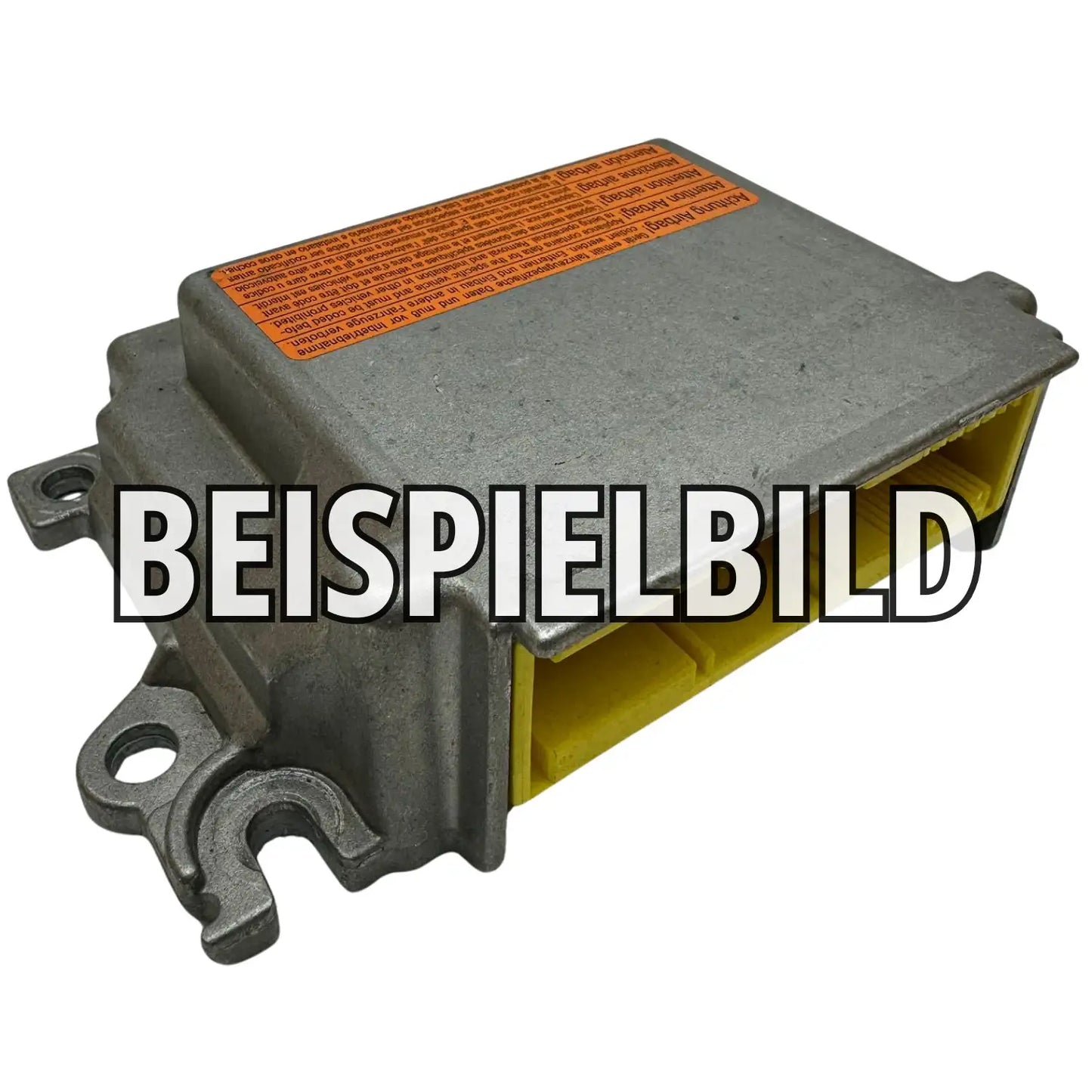Opel Ampera-e A airbag control unit repair
So funktioniert die Reparatur Ihres Airbag-Steuergerätes bei uns

What is an Opel Ampera-e airbag control unit?
The Opel Ampera-e airbag control unit is the central safety unit in your electric vehicle, precisely controlling all occupant restraint systems, such as airbags and seatbelt pretensioners, in the event of an accident. It continuously monitors sensors, stores relevant crash data, and ensures the proper functioning of the entire passive safety system.
This module, often located centrally in the center console, receives signals from impact sensors and triggers the appropriate protection systems within milliseconds. It is crucial for occupant safety in the event of a collision and communicates with other vehicle control units via the CAN bus.
Why is the Opel Ampera-e A airbag control unit defective?
An Opel Ampera-e airbag control unit can be defective because it has stored crash data after an accident, rendering it unusable, or because internal electronic components have a fault. Overvoltage, water damage, or age-related wear and tear can also lead to failure, necessitating an Opel Ampera-e A airbag control unit repair.
A defect is often indicated by a permanently illuminated airbag warning light on the dashboard. This indicates a malfunction in the safety system that should be checked immediately. A defective control unit compromises the functionality of the airbags and thus the safety of the vehicle's occupants.
Internal memory errors or communication problems with other vehicle systems are also common causes of failure. Professional diagnostics are essential to determine the exact cause and ensure a successful Opel Ampera-e A airbag control unit repair.
Common error codes for Opel Ampera-e A airbag control unit repair
During Opel Ampera-e A airbag control unit repairs, specific error codes typically occur that indicate a malfunction directly within the control unit, not with sensors or other peripheral components. These codes require precise diagnostics to identify and resolve the root cause of the problem.
- **B1000** → **Control unit communication error** → **Cause:** The airbag control unit cannot communicate correctly with other vehicle systems, often an internal defect or cable break.
- **B1139** → **SRS (Airbag Control Module) Module Error** → **Cause:** A general malfunction within the airbag control module itself, requiring inspection or replacement of the module.
- **B1193** → **Airbag Module (Control Unit) Error** → **Cause:** Similar to B1139, this code indicates a malfunction of the entire airbag control unit, possibly due to damage or internal corruption.
- **B1206** → **Airbag RCM (Restraint Control Module) Fault** → **Cause:** The Restraint Control Module, another name for the airbag control unit, has a fault that may affect the deployment of the restraint systems.
These error codes require the use of special diagnostic tools. Resetting the control unit is only possible if there is no crash data or serious hard codes, which underscores the need for a professional Opel Ampera-e A airbag control unit repair.
What part numbers are available for the Opel Ampera-e A airbag control unit repair?
There is no publicly available, 100% verified, exact OEM part number for the airbag control unit of the Opel Ampera-e (model F17), neither in official manufacturer catalogs nor from leading suppliers like Bosch or Continental. Therefore, it is crucial to use the chassis number when repairing the Opel Ampera-e A airbag control unit.
While independent spare parts portals and catalogs do list airbag control units for the Ampera-e, they usually do not provide specific OEM part numbers. This makes purchasing a replacement part significantly more difficult, as an incorrect control unit can cause serious malfunctions in the safety system.
For precise parts identification during an Opel Ampera-e A airbag control unit repair, we recommend contacting your Opel dealer directly, providing the vehicle identification number (VIN). This is the only way to reliably identify the correct original part with the correct number to ensure full functionality of the airbag system.
Specialized airbag repair services often have access to advanced databases that can make it easier to determine the required part number. Without this precise identification, a safe and functional replacement of the control unit cannot be guaranteed.
- Choosing a selection results in a full page refresh.
- Opens in a new window.


